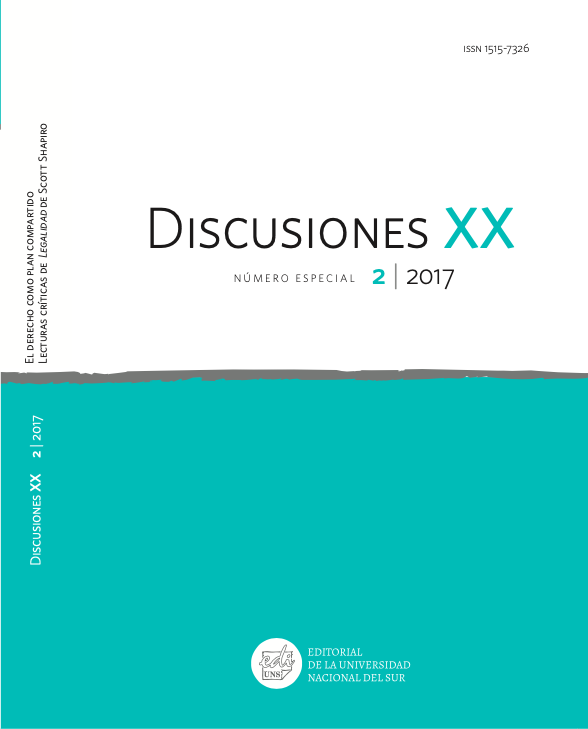Looking for the Nature of Law: On Shapiro’s Challenge
DOI:
https://doi.org/10.52292/j.dsc.2017.2582Keywords:
Jurisprudence, Nature of Law, Social OntologyAbstract
This essay critically focuses on the methodological aspects of Scott Shapiro’s book Legalidad. Indeed, Shapiro’s book sets out several original theses about not only the nature of law and the main problems of jurisprudence, but also about how the nature of law can be discovered by jurisprudence. In this sense, the method of inquiry adopted by Shapiro can be considered as one of the most interesting’ and challenging outcomes of his research. The essay is divided into two parts. The first one provides an analysis of Shapiro’s jurisprudential approach; in particular, it focuses on Shapiro’s resort to metaphysical vocabulary, conceptual analysis, constructive reasoning, and institutional explanation of law. The second part highlights some of the problems that this approach gives rise to. In particular, the essay argues that (1) the planning theory of law is not able to explain legal obligation; (2) Shapiro’s constructive strategy has a recursive character which tends to obscure the variety of legal entities; (3) the version of conceptual analysis proposed in Legality is semantically blind and runs the risk of reading back into the world the features of language; (4) legal entities are supposed by Shapiro to amount to a single universe of legal facts, whereas actual norms, contracts, parliaments, etc. do not seem to have the same basic set of properties and to exist in the same way. To account for this, the essay outlines an alternative view on the nature of law based upon a pluralistic approach to social ontology.
Downloads
Downloads
Published
How to Cite
Issue
Section
License
Discusiones does not withhold rights of reproduction or copyright. Consequently, authors may share the final versions of publications.


